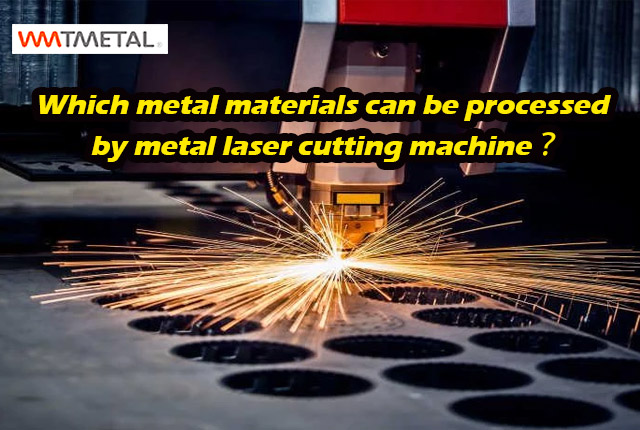WMT CNC Industrial Co., Ltd | All Rights Reserved.Design & Developed by VW Themes

The application of metal laser cutting machines has once again achieved a breakthrough in the quality of metal processing, which is a common progress in improving the quality and efficiency of the metal products industry. Today’s metal laser cutting machines not only have an exquisite appearance but also excellent performance. They are always making breakthroughs and innovations in technology. Constantly bringing surprises in function. So, what are the metal materials suitable for laser cutting?
The modern laser cutting system can cut the maximum thickness of 1 carbon steel plate close to 20mm, and for the thin plate, the slit can be as narrow as about 0.1mm. The heat-affected zone of laser cutting mild steel is very small, and the cut is flat, smooth, and vertical. For high-carbon steel, the edge quality of laser cutting is better than that of low-carbon steel, but its heat-affected zone is larger.
This material works better when cut with oxygen. When using oxygen as the machining gas, the cutting edge oxidizes slightly. For sheets up to 4mm thick, nitrogen can be used as a processing gas for high-pressure cutting. In this case, the cutting edge will not be oxidized. For plates with a thickness of more than 10mm, better results can be obtained by using special plates for lasers and oiling the surface of the workpiece during processing.
Cutting stainless steel requires the use of oxygen, it doesn’t matter if it oxidizes at the edge. Nitrogen is used to obtain an oxidation-free and burr-free edge without further treatment. Coating a layer of oil film on the surface of the plate will get a better perforation effect without reducing the processing quality.
Most alloy steels can be laser cut with good edge quality. However, tool steel and hot work die steel with high tungsten content will produce erosion and sticky slag during laser cutting.
Despite its high reflectivity and high thermal conductivity, aluminum up to 6 mm thick can be cut, depending on alloy type and laser capability. When cutting with oxygen, the cutting surface is rough and hard. When nitrogen gas is used, the cut surface is smooth. Pure aluminum is so pure that it is very difficult to cut and can only be cut if a “reflective absorption” device is installed on the system. Otherwise, reflections could damage the optics.
Cut titanium plates using argon and nitrogen as process gases. Other parameters can refer to nickel-chromium steel.
Both materials have high reflectivity and very good thermal conductivity. Brass with a thickness of less than 1 mm can be cut with nitrogen. It can cut copper with a thickness of less than 2mm, and the processing gas must use oxygen. Copper and brass can only be cut if the system is equipped with a “reflection absorber”. Otherwise, reflections could damage the optics.
In addition, metal laser cutting machines can also process nickel alloy materials such as nickel-titanium alloy, nickel-chromium alloy, iron-chromium-nickel alloy, and nickel-iron alloy.